It was hot on Sunday, August 25th, at the Hollenberg Pony Express Festival near Hanover, KS--103°F hot to be precise. However, festival visitors still got to witness a working “Telegraph Office” in the form of a ham radio HF station operating the under a shade tree and using the callsign of KØASA. This Telegraph-Office display was just one of many displays at the festival depicting life in early America.
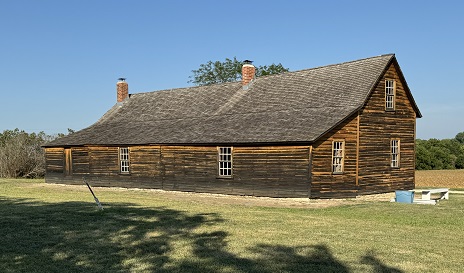 The Hollenberg Pony Express Station is the only Pony Express station in the nation that has been preserved and left on its original foundation. KFØIKQ photo.
The Hollenberg Pony Express Station is the only Pony Express station in the nation that has been preserved and left on its original foundation. KFØIKQ photo.
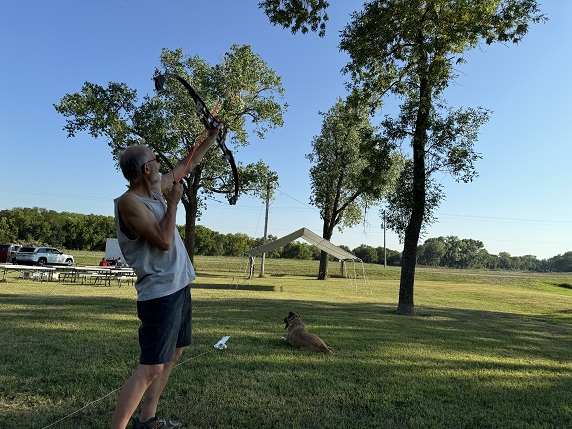 Jim uses a bow and arrow to launch a thin rope over the tree for the far-end support for the EFHW antenna. KFØIKQ photo.
Jim uses a bow and arrow to launch a thin rope over the tree for the far-end support for the EFHW antenna. KFØIKQ photo.
KØASA is the callsign of the Crown Amateur Radio Association (CARA), which is made up of Honeywell retirees. This year the SFTARC assisted the CARA with bringing this amateur radio display to the public. Festival visitors not only got to see communications taking place in the Morse code, but also got a history lesson in early communications in America. They learned that the early wire-line telegraph actually gave birth to the legendary Pony Express. The primary purpose of the Pony Express was to bridge a 2000-mile gap in the telegraph line. In 1860, that gap existed between approximately the Kansas-Missouri boarder and the west coast of the United States.
In order to give visitors a hands-on experience with the Morse code, the front counter on the Telegraph-Office display contained a history of Morse-code-sending devices, ranging from a straight key and sounder through an electronic iambic keyer, and finally onto a WWII pseudo-replica of a spy radio.
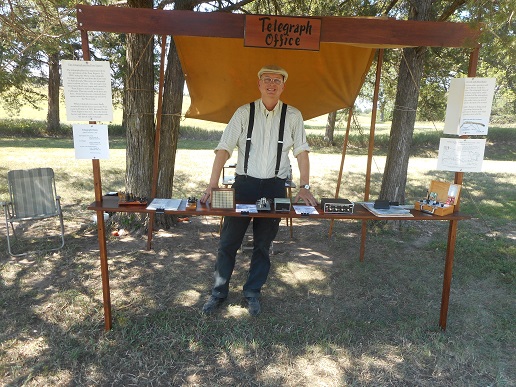
Assisted by informational posters on the side of the Telegraph Office display, SFTARC member Fred Warren, KFØIKQ, and SFTARC and CARA member Jim Andera, KØNK, were able to present an overview of the Morse code and the important role the Morse code played in the history of America. That opened the door for an introduction to the exciting world of amateur radio and the emergency-communications capabilities it offers. And some of the young visitors were given an Archie comic book with a ham-radio theme.
The station consisted of a Kenwood TS-50 transceiver, powered by a 100Ah LiFePO4 battery and operating into a 40m end-fed half-wave wire antenna. Operating as part of the KS QSO Party, only a limited number of contacts were made, with the telegraph operators giving priority to talking to the visitors. With the hot weather, the visitor count was noticeably below normal. Fortunately, there was enough wind and shade to provide the visitors and exhibitors with some relief from the heat.
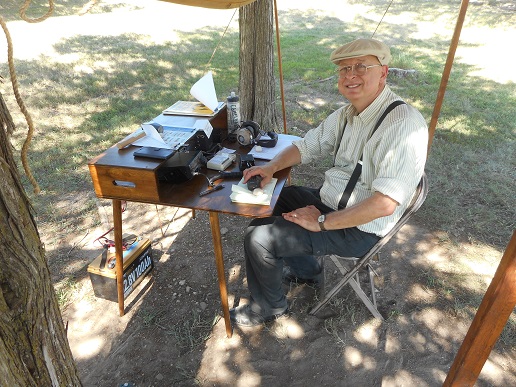
Our interaction with the visitors and the many “Thank-you” remarks we get is what makes the effort to set up and operate the Telegraph Office worthwhile. The CARA has sponsored this display since 2000 and is appreciative of the SFTARC’s support.
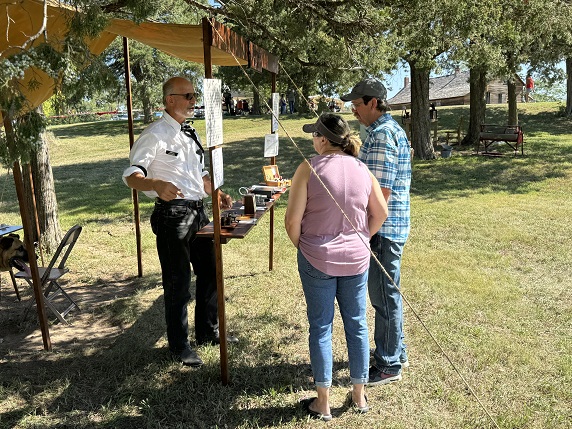 Jim and Fred took turns talking to visitors and explaining the Morse code and amateur radio. KFØIKQ photo.
Jim and Fred took turns talking to visitors and explaining the Morse code and amateur radio. KFØIKQ photo.
